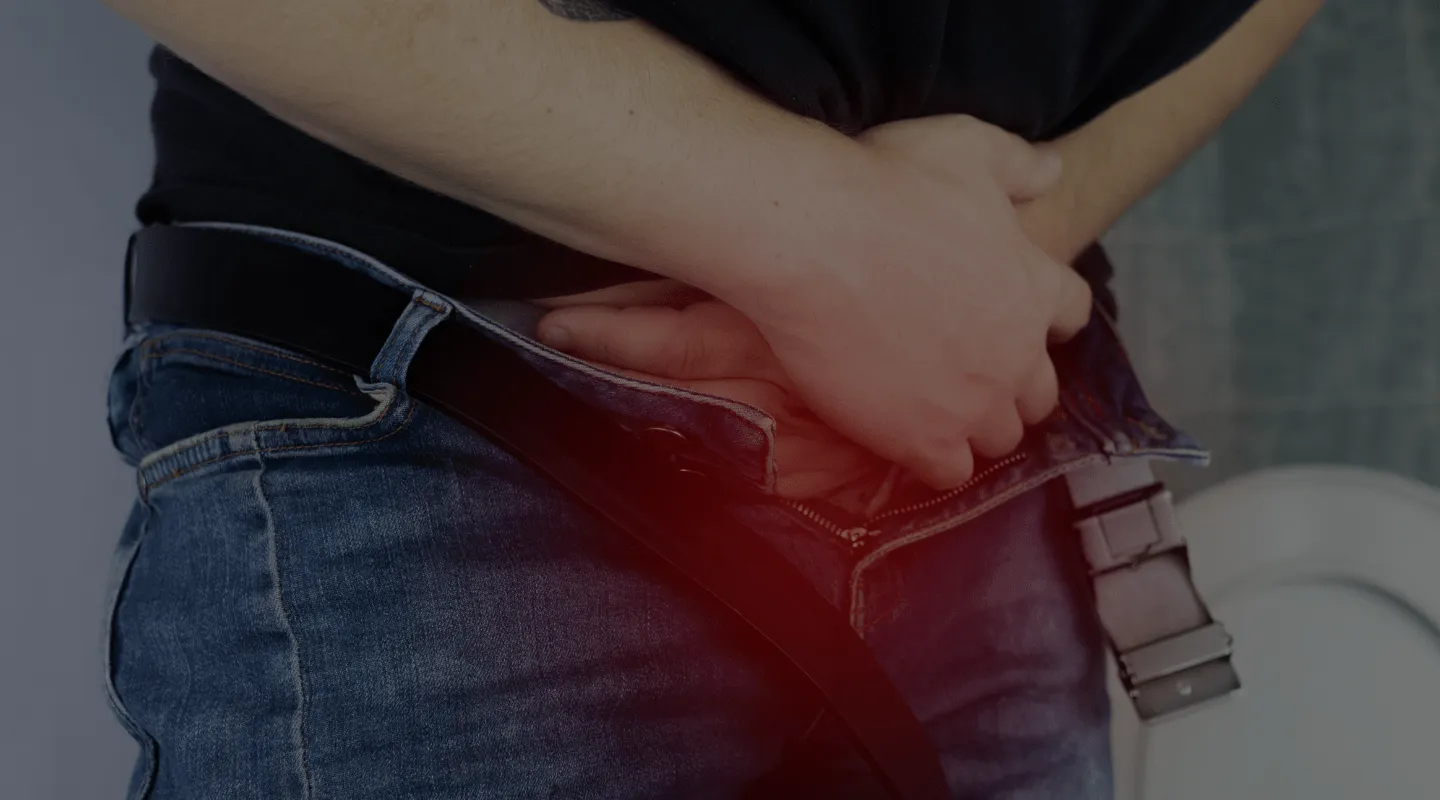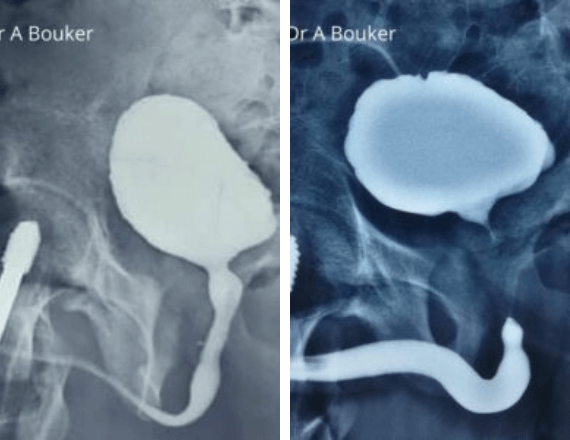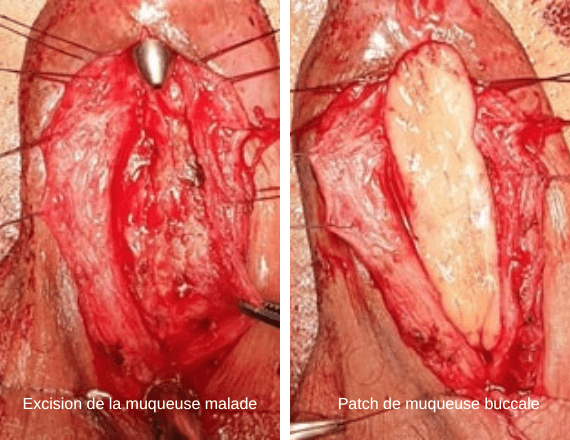
Urethroplasty
Your Urethroplasty in Tunisia at an Affordable Price
Opt for a urethroplasty in a medical destination renowned for its quality urological care
How does it work?
What is Urethroplasty?
The urethra plays a crucial role in evacuating urine from the bladder and facilitating sperm ejaculation in men. In cases where traditional medical techniques are ineffective or have failed, urethroplasty encompasses various surgical methods to treat narrowing of this canal. Over the past two decades, urethroplasties have undergone significant advancements, particularly through the use of buccal mucosa to replace the urethral mucosa, a technique pioneered by Professor Barbagli in Italy. More recently, this procedure can also be performed in Tunis with a success rate comparable to that reported in the literature, reaching between 85 and 90%. This contrasts sharply with endoscopic treatment, which offers only a low cure rate of only 40%.
What is the average cost of urethroplasty in Tunisia?
For several years, urethroplasty surgery has been performed in Tunisia. During your procedure, you can count on the expertise of one of the few urology specialists who masters this surgical technique. Our offers include all costs associated with the procedure, as well as transfers. We offer several accommodation options to meet your needs. Contact us now for a personalized quote free of charge.
What are the causes and symptoms of urethral stricture?
Here are some of the reasons that can lead to urethral stricture: urinary tract infections, errors during catheterization, surgeries to correct malformations of the canal (such as hypospadias) or the prostate, direct injuries to the perineum (such as straddle falls), and pelvic fractures resulting in a complete rupture of the urethra. Urethral stricture can lead to urinary disorders such as difficulty urinating, or even complete urinary retention, as well as recurrent urinary tract infections, among the most frequent symptoms.
How does the urethroplasty procedure work?
Types of Urethroplasty
-
- Anastomotic urethroplasty: This is performed for short strictures. The surgeon makes a small opening between the scrotum and the anus. He removes the scar tissue from the urethra and sutures it. The procedure may involve an overnight stay and the placement of a drain, generally removed the next morning. A urinary catheter is left in place for a few weeks to promote healing. The catheter is removed in the office;
- Urethroplasty with buccal mucosa graft: This is performed for longer urethral strictures. An incision is made between your scrotum and your anus. The scar tissue causing your blockage will be opened and removed, if necessary. To repair damage to the urethra, a graft will be taken directly from the mucosa of your mouth or cheek. An overnight hospital stay will be necessary, during which a drain will be in place and will be removed in the morning. A urinary catheter will be left in place for a few weeks to facilitate the healing process;
- Staged urethroplasty: This is used when a stenosis requires more than one procedure to be repaired. Each procedure is a “stage” on the way to completing your treatment;
- Stage 1. An incision will be made on the underside of your penis (the ventral surface) and an opening is made before the stenosis. By restoring humanity to your body, you will once again be able to freely allow your urine to flow. This procedure involves opening the stenosis beyond the opening and removing any scar tissue. If necessary, a graft will be taken from your mouth or cheek (buccal mucosa) to replace the scarred area. A reinforcing dressing will be left in place to promote graft healing. Patients often go home right after this procedure, but sometimes an overnight observation is warranted;
- Anastomotic urethroplasty: This is performed for short strictures. The surgeon makes a small opening between the scrotum and the anus. He removes the scar tissue from the urethra and sutures it. The procedure may involve an overnight stay and the placement of a drain, generally removed the next morning. A urinary catheter is left in place for a few weeks to promote healing. The catheter is removed in the office;
- Urethroplasty with buccal mucosa graft: This is performed for longer urethral strictures. An incision is made between your scrotum and your anus. The scar tissue causing your blockage will be opened and removed, if necessary. To repair damage to the urethra, a graft will be taken directly from the mucosa of your mouth or cheek. An overnight hospital stay will be necessary, during which a drain will be in place and will be removed in the morning. A urinary catheter will be left in place for a few weeks to facilitate the healing process;
- Staged urethroplasty: This is used when a stenosis requires more than one procedure to be repaired. Each procedure is a “stage” on the way to completing your treatment;
- Stage 1. An incision will be made on the underside of your penis (the ventral surface) and an opening is made before the stenosis. By restoring humanity to your body, you will once again be able to freely allow your urine to flow. This procedure involves opening the stenosis beyond the opening and removing any scar tissue. If necessary, a graft will be taken from your mouth or cheek (buccal mucosa) to replace the scarred area. A reinforcing dressing will be left in place to promote graft healing. Patients often go home right after this procedure, but sometimes an overnight observation is warranted;
When you return to your doctor’s office after about 2 weeks, the catheter and dressing will be removed. During this visit, you will receive instructions on how to care for your penis while it heals, including changing dressings and doing daily stretching exercises. During this healing period, you will be able to urinate freely through the created opening, but you may need to sit down since the opening is not at the tip of the penis.

- Stage 2. This is usually performed about 3 months after the first procedure. Your graft will be formed into a tube so that the opening is near the tip of the penis and you can urinate more normally. A catheter is usually left in place to aid healing. This is removed a few weeks after surgery. You can usually go home the same day after this surgery, but occasionally you may spend the night for observation;

In all other cases, the repair of the urethra uses buccal mucosa. The urologist takes this graft from the inner surface of the cheek, and if the stricture is long, it may be necessary to take both sides as well as the mucosa of the tongue. The donor site is closed and heals very quickly, with the patient resuming a normal diet after a few days of a semi-liquid diet. The graft thus harvested is used to replace the diseased urethral mucosa. It is attached to the urethra by numerous stitches which allows it to be revascularized. This procedure can be performed in all sections of the urethra, sometimes in a single stage, sometimes in two stages at intervals of 3 or 6 months, especially in case of relapse or a history of hypospadias. The surgical procedure generally lasts between 2 and 5 hours and involves a 24 to 48 hour hospital stay. After leaving the hospital, the patient must continue to wear a bladder catheter for the next 3 weeks. For patients coming from abroad, a one-week stay in Tunisia is recommended. These buccal mucosa grafts yield nearly 80 to 85% success.
Our advantages


Contact and quote request for urethroplasty
Our Tunisia Destination Santé team is at your disposal to assist and guide you through all the procedures for your urethroplasty. We accompany you step by step in the preparation of your file and the organization of your stay. The packages we offer include all the fees related to the procedure, but also to transfers. Several accommodation packages can be offered. Do not hesitate to contact us for more information and a free quote without any obligation on your part.
Your health, our priority.
Request your free quote.
Frequently Asked Questions
Buccal mucosal graft urethroplasty utilizes tissue from the buccal mucosa, which is resilient and less prone to infection, thus offering better integration and higher success rates for complex reconstructions.
While urethroplasty primarily aims to improve urinary function, some patients may experience temporary or permanent changes in sexual function, but this varies depending on the technique used and the nature of the urethral stricture.
Most patients regain normal continence after urethroplasty, but in some cases, complications such as urinary leakage may occur, requiring additional management.
Non-surgical alternatives include urethral dilation and urethral stenting, but these methods are often temporary and may not offer the same long-term success rates as urethroplasty.
Patients may benefit from pre-operative counseling to manage expectations and anxieties, as well as ongoing psychological support to help them adapt to post-operative changes and the recovery period.
In some cases, minor urethroplasty can be performed on an outpatient basis, but most procedures require a short hospital stay to monitor for complications and ensure initial recovery safely.
The risk of infection is present as with any surgery, but it is minimized through the use of prophylactic antibiotics and appropriate post-operative care. Superficial infections can be treated with antibiotics, while deeper infections may require additional surgery.
Most patients see a significant improvement in their quality of life thanks to the resolution of bothersome urinary symptoms, although some may experience persistent challenges that require ongoing management.
Recent advances include the use of innovative biological graft materials, minimally invasive techniques, and personalized approaches based on the complexity of the stricture, aiming to improve outcomes and reduce complications.
While research is ongoing, some genetic factors may influence healing and graft response, but there is not yet conclusive evidence indicating that genetics play a major role in the success of urethroplasty.
